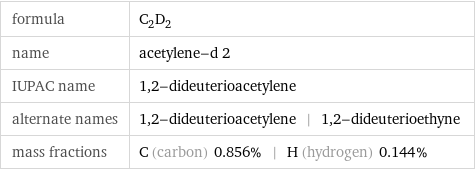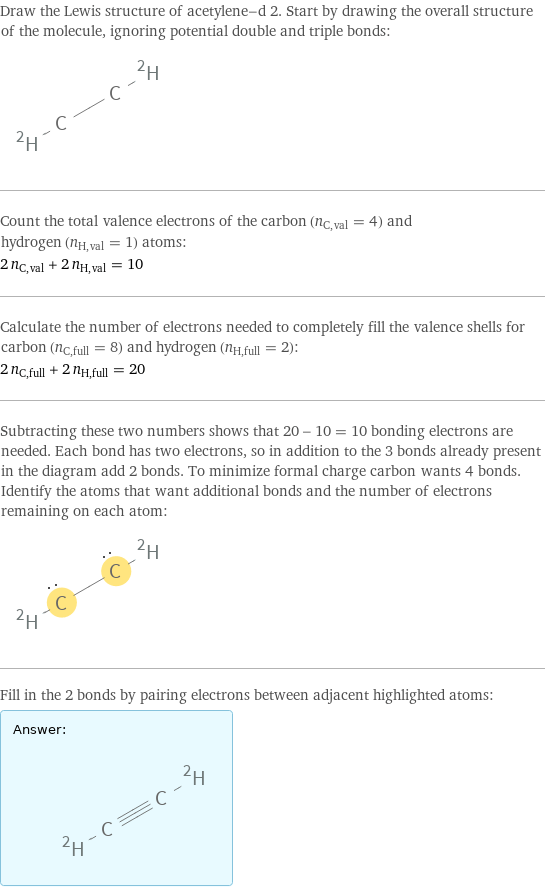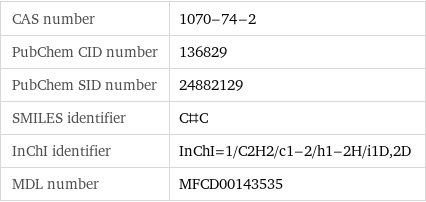Input interpretation

acetylene-d 2
Chemical names and formulas

formula | C_2D_2 name | acetylene-d 2 IUPAC name | 1, 2-dideuterioacetylene alternate names | 1, 2-dideuterioacetylene | 1, 2-dideuterioethyne mass fractions | C (carbon) 0.856% | H (hydrogen) 0.144%
Lewis structure

Draw the Lewis structure of acetylene-d 2. Start by drawing the overall structure of the molecule, ignoring potential double and triple bonds: Count the total valence electrons of the carbon (n_C, val = 4) and hydrogen (n_H, val = 1) atoms: 2 n_C, val + 2 n_H, val = 10 Calculate the number of electrons needed to completely fill the valence shells for carbon (n_C, full = 8) and hydrogen (n_H, full = 2): 2 n_C, full + 2 n_H, full = 20 Subtracting these two numbers shows that 20 - 10 = 10 bonding electrons are needed. Each bond has two electrons, so in addition to the 3 bonds already present in the diagram add 2 bonds. To minimize formal charge carbon wants 4 bonds. Identify the atoms that want additional bonds and the number of electrons remaining on each atom: Fill in the 2 bonds by pairing electrons between adjacent highlighted atoms: Answer: | |
3D structure

3D structure
Basic properties

molar mass | 28.05 g/mol phase | liquid (at STP) melting point | -81 °C density | 0.97 g/cm^3
Units

Liquid properties (at STP)

density | 0.97 g/cm^3
Units

Non-standard atom properties

H-2 | 2
Chemical identifiers

CAS number | 1070-74-2 PubChem CID number | 136829 PubChem SID number | 24882129 SMILES identifier | C#C InChI identifier | InChI=1/C2H2/c1-2/h1-2H/i1D, 2D MDL number | MFCD00143535